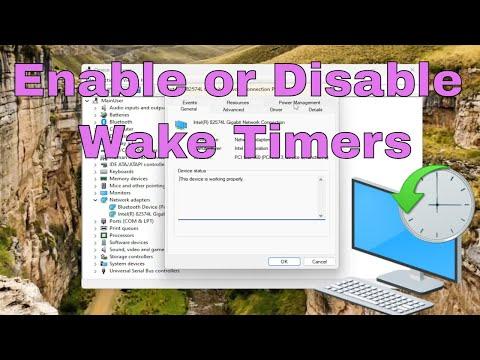It all started on a particularly frustrating morning when I woke up to find my laptop battery completely drained. I had left it on overnight, intending to continue working on a project. To my dismay, I discovered that my computer had been waking up in the middle of the night due to some mysterious activity. The culprit turned out to be wake timers, a feature in Windows 11 designed to wake the computer for scheduled tasks, updates, or other system maintenance.
Initially, I wasn’t entirely sure what wake timers were or how they were affecting my system. I had heard of them before, but I didn’t know they could disrupt my workflow so drastically. After a bit of research, I learned that wake timers can be both useful and troublesome. They can allow the system to perform updates or maintenance tasks automatically, but they can also cause the computer to wake up unexpectedly, draining the battery or disrupting important work.
Determined to resolve the issue, I decided to dive into the settings of Windows 11 to either disable or enable wake timers according to my needs. I started by navigating to the Control Panel, which felt somewhat nostalgic compared to the newer settings interface. From there, I accessed the Power Options. I clicked on “Change plan settings” next to my selected power plan and then on “Change advanced power settings.” This opened up a new window with a plethora of settings that seemed overwhelming at first glance.
I searched for the “Sleep” section, and within it, I found “Allow wake timers.” There were two options available: “Enable” and “Disable.” To prevent the computer from waking up at inconvenient times, I decided to disable wake timers. However, I wasn’t entirely sure if this would affect important scheduled tasks or updates, so I took a cautious approach.
To be safe, I also decided to check if there were any tasks scheduled in the Task Scheduler that might be contributing to the wake timers. I opened the Task Scheduler by typing it into the Windows search bar. In the Task Scheduler, I looked under “Task Scheduler Library” to find any tasks that were set to wake the computer. I found a few tasks related to system maintenance and updates. I adjusted their settings to ensure they wouldn’t wake the computer unnecessarily.
Once I had made these changes, I tested the system to see if the problem was resolved. I put the laptop into sleep mode and monitored it over the next few nights. It was a relief to see that the laptop remained asleep as intended, without any unexpected wake-ups.
However, I also realized that there are times when enabling wake timers could be beneficial, such as when you want the system to perform maintenance tasks or updates automatically. If I needed to enable wake timers in the future, I knew that I could easily reverse the changes I had made. To do this, I would follow the same steps I used to disable them: accessing the “Power Options” from the Control Panel, navigating to the “Sleep” section, and changing “Allow wake timers” to “Enable.”
In the end, managing wake timers in Windows 11 required a careful balance between understanding their benefits and potential drawbacks. By taking control of these settings, I was able to ensure that my laptop functioned according to my preferences, without unexpected interruptions. This experience taught me the importance of exploring system settings to tailor them to my needs, and it gave me a greater appreciation for the fine-tuned control that modern operating systems offer.
Reflecting on the entire process, I realized that understanding and managing these features is crucial for optimizing the performance and usability of any computer system. Wake timers are just one of many settings that can affect how a system operates, and by taking the time to explore and adjust them, I was able to significantly improve my overall experience with Windows 11.
